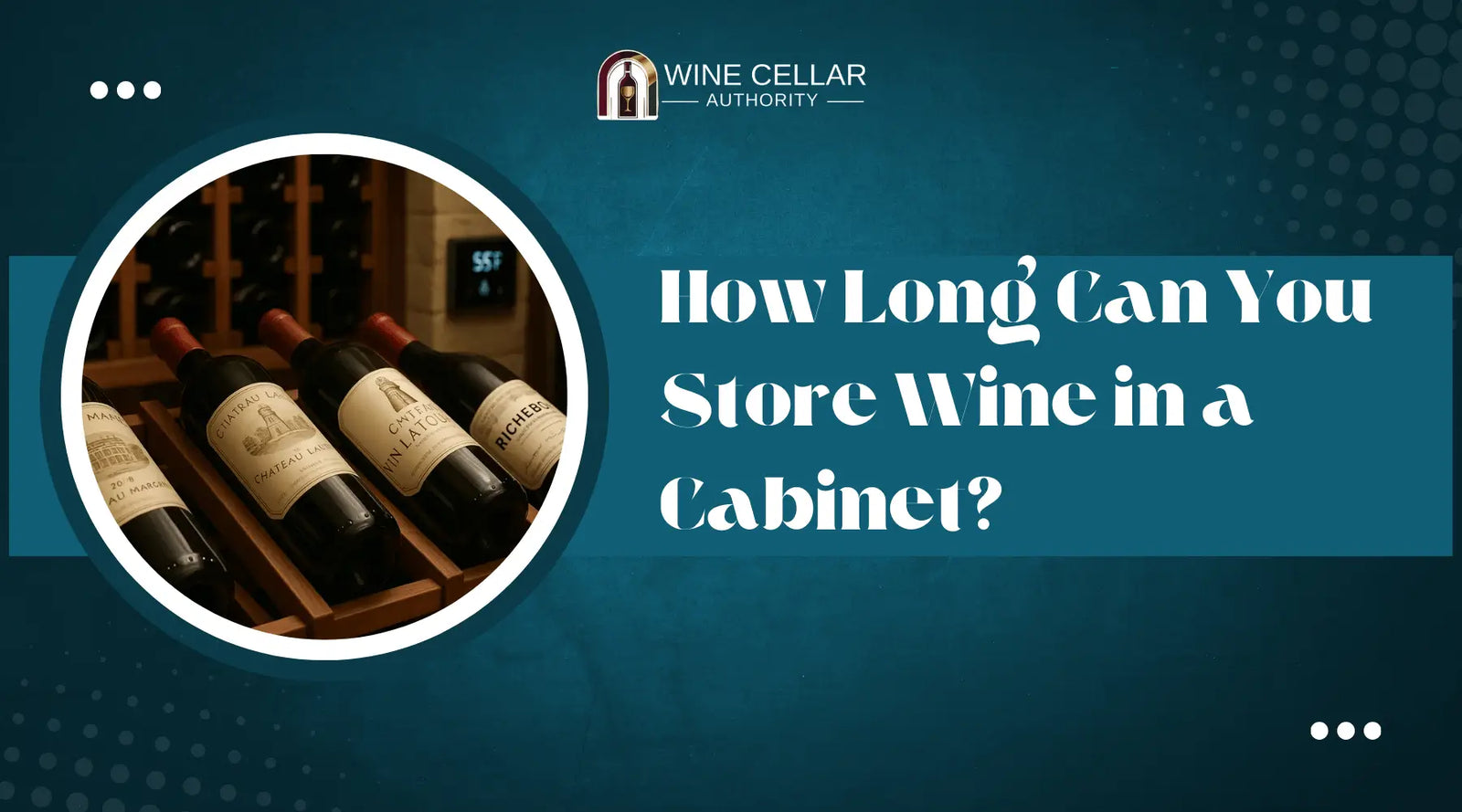Wine is a delicate beverage, and how you store it can make all the difference in taste, longevity, and overall enjoyment. If you’re wondering how long you can keep wine in a cabinet before it goes bad, you’re not alone. This guide will help you understand the factors that affect wine storage, how long different wines last, and how to make the most of your wine cabinet.
For a deeper dive into all aspects of wine storage and preservation, check out our Ultimate Guide to Wine Storage and Preservation.
What Determines How Long Wine Can Be Stored?

Several key factors influence how long wine can be stored in a cabinet:
- Type of wine: Red, white, sparkling, and fortified wines all have different shelf lives.
- Storage conditions: Temperature, humidity, and exposure to light play crucial roles.
- Opened vs. unopened: Once a bottle is opened, its shelf life drops dramatically.
- Wine quality: Everyday wines are made to be enjoyed young, while certain fine or collectible wines may last longer but usually require specialized storage.
Understanding these elements will help you decide how long your wine can last and how to store it properly.
Wine Cabinets vs. Other Storage Solutions
A wine cabinet is a practical, accessible option for most wine lovers. However, it’s important to know how it compares to other storage solutions:
- Wine cabinet: Best for short-to-medium-term storage. Offers a dark, enclosed space, but may not provide precise temperature or humidity control.
- Wine cooler: Maintains consistent temperature and often provides UV protection—ideal for those wanting to store wine for longer than a year or two.
- Wine cellar: Designed for long-term aging and larger collections, with stable temperature and humidity.
- Wine rack: Good for easy access and display, but only suitable if kept in a cool, dark area away from heat and light.
Tip: Cabinets are perfect for everyday wines and short-term storage. For aging fine or collectible wines, consider a wine fridge or professional storage.
Still deciding between a cabinet and a cooler? See our comparison: wine cabinet vs. wine cooler—what’s best for your needs.
Ideal Conditions for Storing Wine in a Cabinet
To maximize the lifespan and quality of your wine, aim for the following conditions:
- Temperature: Store wine between 45°F and 65°F (7°C to 18°C), with 55°F (13°C) being ideal. Most importantly, keep the temperature consistent—fluctuations can harm the wine.
For more details on the best environment for your bottles, read our guide on wine cellar temperature and humidity.
- Humidity: Aim for 50% to 80% humidity. Too little humidity can dry out corks, while too much can encourage mold. Consistency is key.
If you’re struggling to maintain the right humidity, find advice in our post on using a wine cellar humidifier.
- Light: Keep wine away from direct sunlight and fluorescent lighting, which can prematurely age and spoil it.
- Bottle orientation: Store corked bottles horizontally to keep the cork moist. Bottles with screw caps can be stored upright or on their side.
A cabinet in a cool, dark room is usually sufficient for short-term storage but may not be ideal for long-term aging.
How Long Can Different Types of Wine Be Stored in a Cabinet?
The type of wine makes a big difference in storage time. Here are general guidelines for storing unopened bottles in a cabinet under optimal conditions:
-
Red wine: Up to 3 years
Most red wines can be stored for up to three years in a cabinet, though finer reds meant for aging may last longer in ideal cellaring conditions. -
White wine: Up to 2 years
White wines are generally less robust and should be consumed within two years. -
Sparkling wine: 1–2 years
Sparkling wines are best enjoyed young and fresh, usually within one to two years. -
Fortified wine (e.g., Port, Sherry): Up to 4 years
Fortified wines have a longer shelf life due to higher alcohol content.
Note: Most everyday wines are meant to be enjoyed within a few years of purchase. Only certain fine wines benefit from extended aging—and those usually require specialized storage, not a standard cabinet.
What About Collectible or Investment Wines?

If you have collectible, investment-grade, or rare wines, be aware that their aging potential is much greater—but only under optimal, controlled conditions. For these bottles, a wine cabinet is usually not sufficient. Professional storage or a dedicated wine cellar is recommended to preserve their quality and value.
Opened vs. Unopened Wine: Storage Guidelines
-
Unopened wine:
Follow the timelines above, provided the cabinet is cool, dark, and has stable humidity. -
Opened wine:
Once opened, wine’s shelf life drops significantly, even if recorked and stored in a cabinet.- Red wine: 3–5 days
- White wine: 2–3 days
- Sparkling wine: 1–2 days (best within hours)
- Fortified wine: Up to 1 month (with proper sealing)
Important: Air exposure is the main culprit in wine spoilage after opening. Always recork tightly or use a wine stopper or vacuum pump to minimize air contact. For opened bottles, refrigeration is recommended to extend freshness, even for reds.
Signs Your Wine Has Gone Bad

Before pouring a glass, check for these signs that your wine may no longer be good:
- Off smell (vinegar, musty, or chemical odors)
- Cloudy appearance or sediment (for wines that should be clear)
- Brownish color in whites or faded reds
- Sour, flat, or otherwise unpleasant taste
If you notice any of these, it’s best to discard the wine.
Tips to Maximize Wine’s Shelf Life in a Cabinet
- Store bottles in a cool, dark place away from appliances or heaters.
- Avoid storing wine in kitchen cabinets above ovens or dishwashers.
- Keep bottles lying down if they have corks.
- Minimize handling and vibration.
- Use a wine stopper or vacuum pump for opened bottles.
- Check conditions regularly to ensure stability.
Want to avoid common pitfalls? Check out our article on wine storage mistakes and how to prevent them.
Conclusion

Storing wine in a cabinet can be a practical solution for everyday wine lovers. Most wines will stay fresh for up to two or three years if kept unopened in a cool, dark, and moderately humid cabinet with consistent conditions. Remember, not all wines are meant for long-term aging, so check your bottles and enjoy them within their recommended timeframes for the best experience. For fine or collectible wines, consider specialized storage to truly unlock their potential.

